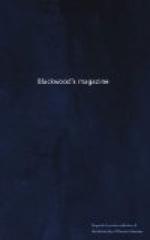The formation of a new route between India and Europe by the Red Sea—a route, though well known to the ancient world, yet wholly incapable of adoption by any but an Arab horseman, from the perpetual tumults of the country—compelled England to look for a resting-place and depot for her steam-ships at the mouth of the Red Sea. Aden, a desolated port, was the spot fixed on; and the steam-vessels touching there were enabled to prepare themselves for the continuance of their voyage. We shall subsequently see how strikingly British protection has changed the desolateness of this corner of the Arab wilderness, how extensively it has become a place of commerce, and how effectually it will yet furnish the means of increasing our knowledge of the interior of the great Arabian peninsula.
It is remarkable that Africa, one of the largest and most fertile portions of the globe, remains one of the least known. Furnishing materials of commerce which have been objects of universal desire since the deluge—gold, gems, ivory, fragrant gums, and spices—it has still remained almost untraversed by the European foot, except along its coast. It has been circumnavigated by the ships of every European nation, its slave-trade has divided its profits and its pollutions among the chief nations of the eastern and western worlds; and yet, to this hour, there are regions of Africa, probably amounting to half its bulk, and possessing kingdoms of the size of France and Spain, of which Europe has no more heard than of the kingdoms of the planet Jupiter. The extent of Africa is enormous:—5000 miles in length, 4600 in breadth, it forms nearly a square of 13,430,000 square miles! the chief part solid ground; for we know of no Mediterranean to break its continuity—no mighty reservoir for the waters of its hills—and scarcely more than the Niger and the Nile for the means of penetrating any large portion of this huge continent.
The population naturally divides itself into two portions, connected with the character of its surface—the countries to the north and the south of the mountains of Kong and the Jebel-al-Komr. To the north of this line of demarcation, are the kingdoms of the foreign conquerors, who have driven the original natives to the mountains, or have subjected them as slaves. This is the Mahometan land. To the south of this line dwells the Negro, in a region a large portion of which is too fiery for European life. This is Central Africa; distinguished from all the earth by the unspeakable mixture of squalidness and magnificence, simplicity of life yet fury of passion, savage ignorance of its religious notions yet fearful worship of evil powers, its homage to magic, and desperate belief in spells, incantations and the fetish. The configuration of the country, so far as it can be conjectured, assists this primeval barbarism. Divided by natural barriers of hill, chasm, or river, into isolated states, they act under a general impulse




